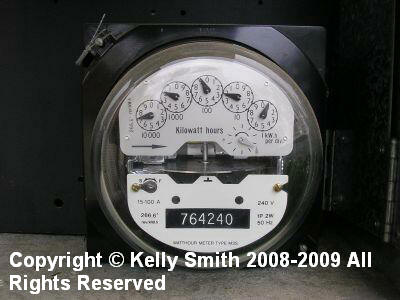Residential Green Energy Technologies
High Utility Bills Encourages Embracing Renewable Alternate Energy Sources
© 2008 by Kelly Smith all rights reserved; content may not be copied, rewritten, or republished without author’s written permission. Author’s Google profile

This article was updated on 7/29/18.
So you’re fed up with your monthly gas and electricity bills? Or you’re building a
green new home and you want to get off on the right track with controlling how much utility power you
have to buy from outside producers? Even if they’re green energy suppliers?
What you need is alternate sources of energy. There are several ways to do this and you’re free
to mix and match in order to reach your energy freedom goals. No, I’m not recommending that you do
any strip mining for coal in your backyard or install a nuclear reactor.
But read on; you’ll learn how to lower utility bills and greenhouse gas emissions.
Choices for Alternative Energy Sources
When it comes to providing some or all of your own energy sources you have options, and the
viability of these will vary according to where you live. Live out on the open plains? You’re a good
candidate for windmill type power using a
residential wind turbine.
If you live in the sun belt (below the Mason-Dixie line), solar power is your ace in the hole. If
you happen to have a stream or fast-moving river in your backyard, you might just be able to
harness that power to run your air conditioner, juice up your microwave, and heat your water.
Ideally, you can use a some of any or all of these to meet your energy demands. Let’s
look at these energy sources in more detail.
Generating Electricity With a Wind Turbine
Wind is a great energy source because it’s almost always in motion to some extent. And once
you’ve got
those big propellers set up and spinning, you’re money ahead. Take that, electrical utility company!
This kind of power is generated using blades, like a fan, mounted on a pole, and incorporated with a
wind turbine. The rotational power turns the turbine and converts this energy into electricity. To be
most effective, many turbines are connected together on a ’turbine farm.’
Using Solar Power for a Residential Energy Supply
Solar energy is an even more predictable source of energy than wind. Even in the dog-dead, still days
of summer the sun shines, and even in the winter when the mercury drops, light energy is still light energy.
Solar panels also offer a smaller footprint than wind turbines.
They can either be mounted on a pole outside your home or simply laid on the roof of your home. And
who sees it there? It’ll keep some of that heat from entering your attic by absorbing it first. Win-win,
ka-ching!
Using Running Water as an Energy Source
OK, granted that this option isn’t much used by any but the most adventurous DIY homeowners. But if
you’re handy, you can put this together. You’ll need a paddle wheel and you’ll have to
attach it to to a
turbine, similar to the one used in wind energy generation.
You’ve likely seen plenty of these kind of set-ups in movies, but used to grind grains rather than
turn a turbine. But the basic concept is basically the same. If Great-Grandpa could rig one of these up with minimal tools, so can you.
So it’s Free to be Your Own Green Energy Provider?
It sounds too good to be true, doesn’t it? As with anything, there are going to be start-up
costs. And
periodic maintenance costs. Plus, if something goes amiss, it’s on you, not a lineman or service tech.
Let’s look at wind power generation, as an example.
The cost for the pole, blade assembly, and mechanical turbine varies widely. You can anticipate
shelling out from $6,000 to $22,000, depending on manufacturer, self or professional installation, etc.
The average life-span is about 20 years and it’ll pay for itself in between 5 and 15 years.
Other than that, just having a wind turbine on your property increases the value of your property if you are planning on putting it on the market any time soon.
If your’re considering harvesting the sun’s energy, this is a very competitive market. Look into a list of
solar panel manufacturers
to research which deal best fits your needs.
As good as it is to use residential green energy technology to move off or minimize dependence on the grid, it also important to minimize the amount of power you consume. In other words, make all the tweaks possible to lower usage. In the summer months, it is beneficial to use an A/C misting system.
I offer article and blog-writing services. Interested? Hire Me!
Did you find this article helpful? Thanks for supporting this free site with a small donation!
Visit Kelly's profile on Pinterest.
Recommended Green Building Articles
|